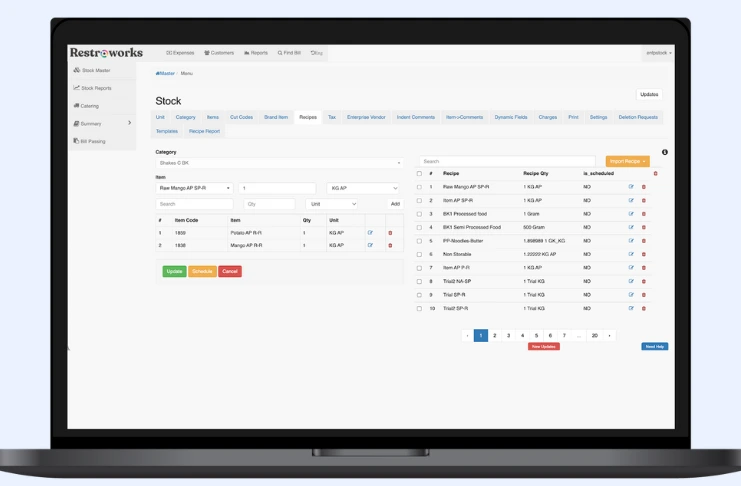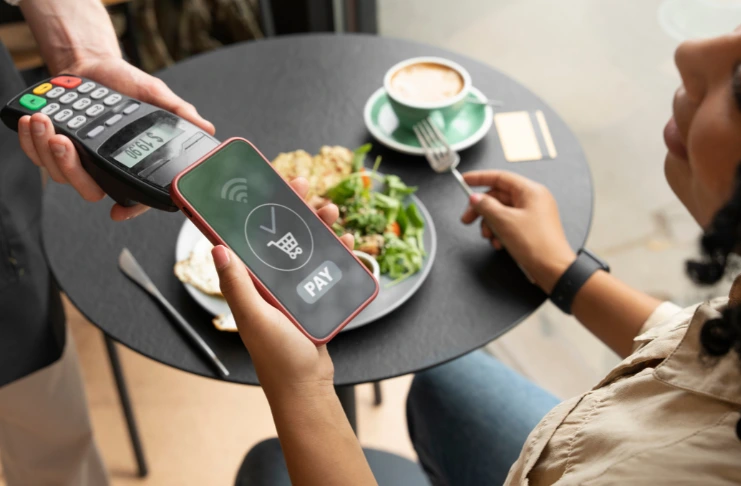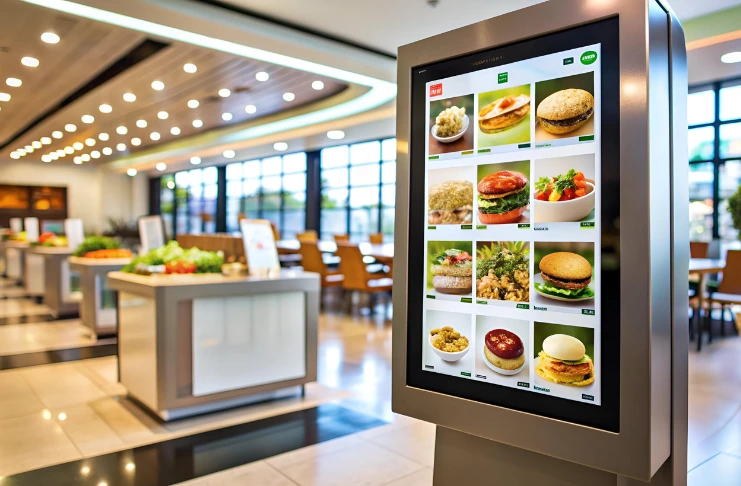
From bustling food trucks in Manila to full-service restaurants in Cebu, the pressure is on to deliver speed, precision, and personalization at every point of contact. Today’s diners expect speed, accuracy, and seamless payment options. Behind the scenes, restaurant owners must juggle inventory management, menu changes, staff workflows, multi-channel orders (dine-in, delivery, takeout), and customer loyalty programs. A modern point of sale (POS) solution that integrates these functions can transform business operations, enabling operators to enhance the customer experience while maintaining control and insight into day-to-day operations.
In the Philippines, this need is especially pronounced: local tax and regulatory requirements (e.g., BIR compliance), connectivity challenges, and the growing popularity of digital and cashless payments demand that the best restaurant pos system is not just feature-rich, but also reliable, locally aware, and user-friendly.
In this article, we’ll dive into what makes a POS great for restaurants, how to evaluate candidates, and then walk through the ten top restaurant POS systems suitable for Philippine restaurants in 2025. We’ll compare restaurant POS system features such as menu management, advanced inventory management, table operations, customer engagement, and multi-payment options, and help you decide which is best for your setting (e.g., food truck, café, full-service, multi-branch, etc.).
Key Takeaways
- Comprehensive Functionality Is Essential: A modern restaurant POS should go beyond payment processing, integrating inventory management, menu flexibility, table operations, and customer engagement into one unified platform.
- Local Compliance and Reliability Matter: In the Philippines, features like BIR compliance, offline capabilities, and multi-payment support are crucial to ensure uninterrupted operations and regulatory adherence.
- Advanced Analytics Drive Smarter Decisions: Built-in reporting, sales trend analysis, and real-time dashboards help optimize menus, staffing, and inventory while improving overall business performance.
- Scalability and Integration Are Key for Growth: The best POS systems offer seamless integration with accounting, delivery, and CRM tools while supporting multi-location management for expanding businesses.
What Makes a Great POS for Restaurants in the Philippines?
Before listing specific software, let’s clarify the capabilities that set a top-tier restaurant POS apart from a generic retail system. These criteria guide our evaluation and comparison.
Core Functional Requirements
- Order & Table Management / Floor Layout / Table Management
For full-service restaurants, having a POS system that supports floor layouts, table mapping, and table status (available, seated, ordering, billed) is essential. Some restaurants require multiple courses, hold orders, transfer tables, or merge/separate bills. A system without strong table management is weak for sit-down dining. - Menu Management & Modifiers
Restaurants typically have menus with variants, modifiers (e.g., extra cheese, no spice), combos, courses, and pricing by time or day. The POS must allow you to manage these flexibly (e.g., seasonal items, special menus). - Inventory Management & Advanced Inventory Management
A restaurant POS must go beyond “number of menu items sold”; it should allow ingredient-level tracking (e.g., if you have 100 eggs, each omelette deducts 2), manage purchase orders, wastage, alert reorder thresholds, and integrate with accounting or suppliers. That level of advanced inventory management system ensures costs don’t spiral and stockouts are minimized. - Multi-Payment Options & Payment Integrations
In the Philippines, customers expect to pay via cash, credit/debit cards, and increasingly via e-wallets or QR payments (e.g., GCash, Maya). The POS should seamlessly support these features, allow split billing, and route transactions to multiple payment gateways. - Offline / Reliability / Sync
Internet outages or unstable connectivity are realities in many areas. The POS should operate in offline mode (caching transactions and syncing later) to prevent disruptions to operations. - Customer Relationship Management (CRM) & Loyalty Programs
To drive repeat business, the POS should store customer profiles, order histories, preferences, and support loyalty programs (points, discounts, promos). This helps enhance customer engagement and satisfaction over time. - Integration with Accounting Software & Ecosystem
The POS should integrate with accounting tools (e.g., QuickBooks, Xero, or local PH accounting systems), payroll, delivery platforms, online ordering, or third-party modules. This minimizes data duplication and manual reconciliation. - Reporting, Sales Trends & Analytics
The POS should deliver dashboards and reports on sales trends (by item, by hour, by branch), peak periods, profit margins, inventory turnover, and other key metrics. These insights enable restaurant management to make more informed business decisions. - Multi-branch / Scalability
For owners planning multiple outlets, the POS must support centralized control (menu sync, unified analytics, inventory transfer) across branches. - Ease of Use & Training (User Friendly Interface)
A system with a steep learning curve or clunky UI will slow down staff and frustrate management. The interface must be intuitive, responsive, and easy for new staff to pick up.
In the Philippines specifically, the restaurant POS software market is poised for strong growth. Many establishments still operate with manual or outdated systems. The demand for unified solutions that manage orders, payments, inventory, and customer data is increasing. Against this backdrop, restaurant owners are increasingly prioritizing inventory management, customer engagement, and seamless operations.
INDUSTRY INSIGHT
The global point-of-sale systems market is experiencing rapid expansion, reflecting the growing demand for digital transformation across various industries. Valued at USD 28.93 billion in 2023, the market is projected to grow at a compound annual growth rate (CAGR) of 15.9%, reaching USD 102.07 billion by 2030.
This surge is driven by increased adoption of cloud-based POS software, mobile payment solutions, and advanced inventory management tools, especially in sectors like retail stores and the restaurant industry. For restaurant businesses, investing in a robust POS system is becoming essential to streamline restaurant operations and enhance customer engagement.
Top 10 POS Systems for Restaurants in the Philippines (2025)
Below is a curated list of ten POS systems well-suited (or adaptable) for restaurants in the Philippines. We have highlighted their key features, strengths, and the type of restaurant they best fit.
POS System | Ease of Use & Interface | Inventory & Menu Management | CRM & Customer Engagement | Scalability & Multi-Location Support |
Restroworks | Highly intuitive, minimal training required | Advanced inventory, ingredient-level tracking, and strong menu customization | Built-in CRM, loyalty programs, and customer profiles | Scales easily across multiple outlets |
HashMicro POS | Clean UI, slightly steeper learning curve due to ERP integration | Robust inventory control, combo/menu management, and purchase tracking | Membership tools, targeted promotions, loyalty points | Designed for enterprise, with excellent multi-branch features |
Shopify POS | Very user-friendly, retail-style interface | Basic inventory features, limited advanced menu options | Strong CRM integrations, marketing tools | Easily handles multiple locations and channels |
Lavu POS | iPad-first, fast and intuitive | Good ingredient tracking and menu flexibility | Loyalty, rewards, and targeted promotions are built in | Scales well for full-service and multi-branch restaurants |
Square POS | Extremely easy to use, minimal setup time | Standard inventory, limited advanced options | Basic customer data and engagement tools | Good scalability for small to mid-size businesses |
Condor POS | Simple, locally-optimized interface | Real-time inventory, recipe management, supplier tracking | Loyalty, customer data, and rewards | Strong multi-location and central reporting features |
Aldelo POS | Customizable, but needs initial training | Ingredient-level inventory and recipe tracking | Gift cards, loyalty, and customer history | Scalable with strong chain-restaurant features |
StoreHub | Clean, retail-friendly design, easy onboarding | Real-time inventory, stock alerts, basic menu tools | CRM, loyalty, and campaign management | Effective multi-branch management tools |
UTAK POS | Simple and SME-focused | Auto-deduct inventory, limited advanced features | Basic customer tracking, limited engagement tools | Multi-branch dashboard for small chains |
SpotOn POS | Modern UI, easy to customize | Inventory, cost control, and dish profitability tracking | Advanced CRM, loyalty, and marketing automation | Excellent scalability for multi-unit operations |
1. Restroworks

Restroworks is a cloud-based restaurant POS system designed to meet the dynamic needs of modern food businesses. With its intuitive interface and robust backend capabilities, Restroworks empowers restaurant owners to streamline business operations, manage inventory efficiently, and enhance customer service across dine-in, delivery, and takeout channels.
Key Features:
- Advanced Inventory Management: Real-time tracking, recipe costing, waste control, and purchase order automation.
- Table Management: Customizable floor plans, split billing, and modifier support for complex orders.
- Menu Management: Easy updates across branches, seasonal menus, and item-level analytics.
- Customer Relationship Management (CRM): Loyalty programs, customer profiles, and engagement tools.
- Multiple Payment Options: Seamless integration with GCash, Maya, QR codes, and credit card terminals.
- Accounting Software Integration: Syncs with platforms like QuickBooks and Xero for financial reporting.
- Offline Mode: Ensures uninterrupted service during internet outages.
- Sales Trends & Reporting: Real-time dashboards and predictive analytics for smarter decisions.
Best for: Restroworks is ideal for full-service restaurants, upscale dining establishments, and multi-branch chains that require deep operational control, advanced reporting, and customer engagement tools. It’s also well-suited for restaurateurs looking to scale and digitize their restaurant management processes.
Who Should Avoid: Small food trucks, kiosks, or budget-conscious startups may find Restroworks a bit overwhelming.
2. HashMicro POS
HashMicro POS is a comprehensive, cloud-based POS solution tailored for medium to large-scale restaurants and retail stores. Known for its modular architecture and deep integration capabilities. It’s also BIR-accredited, making it a reliable choice for compliance-conscious businesses.
Key Features:
- Offline / Online Transaction Mode: Supports continuing transactions during connectivity outages and syncs automatically later
- Meal Combo / Menu Variant Management: Define meal bundles, variant pricing, and combo modifiers for restaurant menus.
- Membership / Customer & Promotion Management: Maintain customer profiles, run targeted promos, and segment campaigns.
- Accounting Software Integration: Seamless sync with platforms like QuickBooks, Xero, and local PH accounting systems.
- Multiple Payment Methods: Supports GCash, Maya, QR payments, and credit card terminals.
Best for: HashMicro POS is ideal for full-service restaurants, multi-branch chains, and delivery-centric operations that require advanced inventory management, detailed sales analytics, and integration with third-party platforms. It’s especially beneficial for restaurant owners looking to scale efficiently while maintaining control over menu management and customer engagement.
Who Should Avoid: Small cafés, food trucks, or startups with limited budgets and simpler workflows may find HashMicro’s feature set overwhelming or cost-prohibitive. Businesses that don’t require multi-branch support or advanced CRM tools might prefer a more lightweight POS software focused on core sales system functions.
3. Shopify POS
Shopify POS is a versatile, cloud-based point-of-sale system designed to unify in-person and online sales for restaurants, cafes, and retail stores. While originally built for retail, its growing adoption in the restaurant industry, especially among hybrid models like food trucks and dine-in cafés with online ordering
Key Features:
- Multiple Payment Processors: Accepts GCash, Maya, QR codes, credit cards, and cash.
- Sales Trends & Reporting: Smart analytics for product performance and customer behavior.
- Accounting Software Integration: Syncs with QuickBooks, Xero, and other third-party tools.
- Mobile POS: Operates on tablets and smartphones for flexible setups.
- Omnichannel Support: Unified dashboard for online and offline orders.
Best for: Shopify POS is ideal for small to medium-sized restaurants, cafés, and food trucks that also sell products online or want to expand into e-commerce. It’s especially useful for businesses focused on customer engagement and loyalty programs, as well as those requiring a sleek, mobile sales system with advanced inventory management capabilities.
Who Should Avoid: Full-service restaurants with complex table management needs or high-volume dine-in operations may find Shopify POS lacking in specialized features for their specific needs. Businesses that require deep kitchen workflows, modifier-heavy menus, or offline-first reliability may prefer a restaurant-specific POS software.
4. Lavu
Built with flexibility and scalability in mind, LAVU supports everything from small cafés to full-service restaurants, offering tools that streamline restaurant management, enhance customer service quality, and improve operational efficiency. Its iPad-based interface is intuitive and mobile-friendly, allowing restaurant owners to manage inventory, monitor sales trends, and optimize table management from anywhere.
Key Features:
- Employee / Payroll Management: Includes features for staff clock-in/out and integration with payroll.
- Reporting & Analytics / Sales Trends: Offers in-depth sales reports and trend insights.
- Training Mode: A safe “practice” mode for staff to learn using the POS without affecting live data.
- Open API & Integrations: Supports integration with accounting, delivery, and other third-party systems.
- Kitchen Display System (KDS): Sends orders digitally to kitchen screens for efficient routing.
Best for: LAVU is ideal for full-service restaurants, bars, and upscale dining establishments that require robust table management, advanced inventory tools, and strong customer engagement features. It’s especially beneficial for restaurant owners who prioritize mobility, real-time reporting, and a user-friendly interface.
Who Should Avoid: Small food trucks, kiosks, or budget-conscious startups may find LAVU’s pricing and feature set more than they need. Businesses that prefer Android or Windows-based hardware may also face limitations, as LAVU is optimized for iOS devices.
5. Square POS

Square POS is a sleek, cloud-based POS system designed for simplicity, mobility, and affordability. Square’s intuitive, user-friendly interface makes it easy to set up and operate, even for teams with minimal tech experience. With built-in tools for inventory management, customer engagement, and multiple payment options, Square POS helps streamline restaurant management while enhancing customer service.
Key Features:
- Multiple Payment Options: Accepts GCash, Maya, QR codes, credit cards, and cash.
- Sales Trends & Reporting: Smart dashboards for tracking performance and forecasting demand.
- Mobile POS: Operates on smartphones and tablets, ideal for flexible setups.
- Offline Mode: Ensures uninterrupted service during internet outages.
- Accounting Software Integration: Syncs with QuickBooks, Xero, and other platforms.
Best for: Square POS is ideal for small cafés, food trucks, kiosks, and pop-up restaurants that require a lightweight, mobile sales system with essential features. It’s perfect for businesses focused on speed, customer engagement, and ease of use without the complexity of full-service restaurant operations.
Who Should Avoid: Large restaurants, multi-branch chains, or establishments requiring advanced inventory management, table management, or deep kitchen workflows may find Square POS too limited.
6. Condor POS
With its BIR-compliant architecture and offline capabilities, Condor POS is well-suited for restaurants operating in areas with intermittent internet connectivity. Its intuitive, user-friendly interface makes it easy to onboard staff, while its core features support efficient inventory management, table management, and customer engagement.
Key Features:
- BIR Compliance: Ensures legal and tax reporting standards are met for Philippine businesses.
- Sales Trends & Reporting: Daily sales operations summaries, performance tracking, and exportable reports.
- Hardware & Peripheral Integration: Works with receipt printers, barcode scanners, fingerprint login, and POS hardware.
- Line Buster / Queuing System: Helps manage customer flow and reduce waiting lines.
- Mobile Inventory Assistant: Staff can perform physical stock audits or counts via mobile without moving items manually.
Best for: Condor POS is ideal for small to mid-sized full-service restaurants, cafés, and local chains that prioritize affordability, BIR compliance, and reliable offline functionality. It’s especially beneficial for businesses seeking a straightforward sales system with essential features and strong local support.
Who Should Avoid: Large franchises, cloud kitchens, or restaurants needing advanced inventory management, predictive analytics, or deep integration with third-party platforms may find Condor POS too limited. Businesses seeking rapid scalability or complex multi-branch operations may prefer more robust POS software.
7. Aldelo
Aldelo is a robust, Windows-based restaurant POS system designed to support full-service restaurants, bars, and multi-location operations. Known for its reliability and depth of features, Aldelo offers a comprehensive solution for restaurant owners seeking to streamline business operations, manage inventory, and enhance customer service. With built-in tools for table management, customer relationship management, and advanced reporting, Aldelo enables operators to maintain control over daily workflows while enhancing customer engagement and satisfaction.
Key Features:
- Multi-Platform Compatibility: Works seamlessly on iPad, Android, Windows, and handheld devices.
- Customizable Floor Plans: Offers graphical table layouts, seating maps, and waitlist management.
- Staff & Labor Tools: Includes time clock, shift scheduling, and role-based access control.
- Ingredient-Level Inventory: Tracks recipes and deducts ingredient stock in real time with each sale.
- Online & QR Ordering: Let’s guests order via web storefronts or QR codes and integrate with delivery platforms.
Best for: Aldelo is ideal for full-service restaurants, bars, and multi-branch chains that require detailed table management, advanced inventory tools, and strong CRM capabilities. It’s especially beneficial for restaurant owners who prefer a Windows-based sales system with deep customization and reporting features.
Who Should Avoid: Small cafés, food trucks, or startups with limited budgets and simpler workflows may find Aldelo’s setup and pricing too complex. Businesses seeking mobile POS or cloud-first solutions may prefer more lightweight, tablet-based POS software.
8. StoreHub (Philippines)
StoreHub is a cloud-based restaurant POS system that has gained strong traction among Filipino SMEs, especially in the café and quick-service segments. Designed to unify point of sale, inventory management, and customer engagement, StoreHub offers a user-friendly interface and powerful backend tools that help restaurant owners streamline business operations and enhance customer satisfaction. With localized support and BIR compliance, it’s well-suited for the Philippine market, offering features that cater to both retail stores and food service establishments.
Key Features:
- QR Order & Pay: Enables customers to view menus, place orders, and pay using QR codes directly from their phones.
- BIR-Accredited POS: Supports official receipts, tax reporting, and BIR compliance for PH businesses.
- User-Friendly Interface / Easy Onboarding: A minimal learning curve allows staff to pick it up quickly with an intuitive design.
- Actionable Reports & Analytics: Provides dashboards showing best sellers, peak hours, margins, and performance trends.
- Multi-Outlet / Branch Management: Central management for menus, stock, and sales across multiple store locations.
Best for: StoreHub is ideal for small to mid-sized cafés, quick-service restaurants, and retail stores that prioritize customer engagement, loyalty programs, and efficient inventory management. It’s especially beneficial for restaurant owners looking for a scalable sales system with localized support and seamless integrations.
Who Should Avoid: Full-service restaurants with complex table management needs or businesses requiring advanced kitchen workflows may find StoreHub’s feature set limited. Those seeking deep customization or predictive analytics might prefer more specialized restaurant POS software.
9. UTAK POS

UTAK POS is a proudly Filipino-developed restaurant POS system built to meet the specific needs of local food businesses. Designed with simplicity, affordability, and compliance in mind, UTAK offers a user-friendly interface and essential features that help restaurant owners manage inventory, streamline business operations, and enhance customer satisfaction. With BIR accreditation and strong local support, UTAK is especially popular among small to mid-sized restaurants, cafés, and food trucks across the Philippines.
Key Features:
- Cloud-Based Tablet POS: Runs on tablets with cloud sync for real-time access and updates.
- Auto-Deducting Inventory Management: Deducts stock quantities automatically as items are sold.
- Real-Time Sales Reporting & Analytics: Provides dashboards and graphs of sales, trends, and performance.
- Integrated Online Ordering/POS Website: Connects online ordering directly to the POS system.
- Staff Attendance / Time Tracking: Allows self-managed attendance logging and work hour monitoring.
Best for: UTAK POS is ideal for small cafés, food trucks, kiosks, and quick-service restaurants that need a reliable, easy-to-use sales system with essential features. It’s especially beneficial for restaurant owners who want to manage inventory, boost customer engagement, and stay compliant without investing in complex or expensive POS software.
Who Should Avoid: Large full-service restaurants, multi-branch chains, or businesses requiring advanced inventory management, predictive analytics, or deep integration with third-party platforms may find UTAK’s feature set limited. Operators seeking enterprise-level scalability or custom workflows might prefer more robust restaurant POS systems.
10. SpotOn POS
SpotOn POS is a modern, cloud-based restaurant point-of-sale solution designed to streamline operations, boost efficiency, and improve customer engagement. It offers customizable menus, integrated online ordering, real-time inventory tracking, powerful CRM and loyalty tools, and multi-location management. With built-in marketing, reporting, and offline capabilities, SpotOn helps restaurants deliver seamless service, enhance guest experiences, and scale effortlessly across locations.
Key Features:
- Customizable Restaurant-Optimized POS: Configure your menu, modifiers, and interface to match your unique serving style.
- Flexible Check Splitting & Bill Management: Split checks by guest, item, or custom amounts; drag and drop items between checks.
- Integrated Marketing / Loyalty Tools: Send promotions, manage loyalty points, and engage customers from the POS.
- Hardware Ecosystem with Handhelds / Displays: Supports terminals, customer-facing displays, handheld devices, and kitchen printers/displays.
- Multi-Unit / Multi-Location Management: Control menus, pricing, and performance across multiple outlets from a central dashboard.
Best for: SpotOn POS is ideal for full-service restaurants, multi-branch chains, and cloud kitchens that require enterprise-grade features, deep analytics, and robust CRM tools. It’s especially beneficial for restaurant owners focused on scaling operations, enhancing customer engagement, and gaining real-time insights into sales trends.
Who Should Avoid: Small cafés, food trucks, or budget-conscious startups may find SpotOn’s pricing and feature set excessive for their needs. Businesses seeking a lightweight sales system with basic functionality might prefer simpler POS software tailored to smaller operations.
Different Types of POS

Here are the main types of POS systems:
Traditional POS: Installed on local servers and desktops, this system is reliable and feature-rich but requires on-site hardware and maintenance. It’s best for large restaurants with stable infrastructure.
Cloud-Based POS: Stores data online and allows access from multiple devices. It’s ideal for small to medium-sized businesses due to its flexibility, scalability, and remote accessibility.
Mobile POS: Operates on smartphones or tablets, making it perfect for food trucks, pop-ups, and cafés. It supports quick transactions and is easy to set up.
Self-Service POS: Used in fast-food chains and quick-service restaurants, these kiosks let customers place orders and pay independently, reducing wait times and labor costs.
Hybrid POS: Combines cloud and local storage, offering both reliability and remote access. It’s suitable for businesses that want the best of both worlds.
Tips for Choosing & Implementing a Restaurant POS

When selecting your POS, follow a systematic approach:
- Start with a Pilot or Trial
Before committing, test the POS in a single location or during off-peak hours. This trial should simulate real-world scenarios such as peak rush periods, offline transactions, split billing, and inventory updates. A pilot run helps you identify usability issues, integration gaps, and performance under load without disrupting your main operations. - Ask the Right Questions
Engage potential vendors with a detailed checklist to ensure the system meets your needs. Key questions include:- How does the POS handle BIR and tax compliance (receipts, e-journals, Z-reads)?
- What happens during internet outages, and how long can the system operate offline before syncing?
- What hardware (terminals, printers, tablets) is compatible and locally supported?
- Can it integrate with your accounting software, delivery apps, or loyalty platforms?
- What is the true cost structure, including subscriptions, add-ons, and support?
- Finally, assess the availability and quality of local support, training, and repair services.
- Be Aware of Hidden Costs
While a base subscription may seem affordable, additional features like loyalty programs, CRM modules, advanced inventory tools, or extra terminals can significantly increase costs. Factor in ongoing expenses such as system upgrades, data backups, migration services, and hardware replacements. - Plan for Data Migration and Setup
If you’re transitioning from a manual or legacy system, ensure that historical data, including menus, inventory, sales history, and customer profiles, is migrated smoothly. Involve the vendor’s support team or consultants if necessary. - Prioritize Staff Training
Even the most user-friendly interface requires proper training. Run mock sessions that simulate peak hours and complex scenarios like voids, modifiers, and multi-payment transactions to build staff confidence. - Monitor, Measure, and Improve
After deployment, continuously monitor KPIs like order times, error rates, inventory accuracy, and customer feedback. Use POS analytics to refine menus, optimize staffing, and improve workflows, ensuring the system continues delivering value as your business evolves.
Conclusion
Choosing the right POS system is no longer just about processing transactions; it’s about empowering your restaurant to thrive in a fast-paced, tech-driven market. From inventory control and customer loyalty to BIR compliance and multi-branch scalability, today’s POS platforms offer tools that go far beyond the cash register.
Whether you’re running a cozy café or a growing restaurant chain, investing in a system that aligns with your operational goals and local requirements is essential. As we’ve seen, the Philippine market offers a diverse range of solutions from locally developed platforms like UTAK and Condor to globally recognized systems with strong analytics and CRM capabilities.
The key is to prioritize features that support your growth, simplify your workflows, and elevate the customer experience. With the right POS system in place, your restaurant isn’t just keeping up, it’s setting the pace. Ready to upgrade your operations? The future of food service starts with smarter tech.
Frequently Asked Questions
Most restaurants use cloud-based POS systems that offer inventory management, sales tracking, and customer engagement tools. These systems are favored for their flexibility, ease of use, and ability to integrate with payment platforms and accounting software. In the Philippines, many restaurants prefer locally supported solutions like Restroworks, especially those that cater to dine-in, delivery, and multi-branch operations.
POS system costs in the Philippines vary depending on features and scale. Basic systems for small cafés may start around ₱15,000–₱30,000, while more advanced setups with inventory, CRM, and multi-branch support can range from ₱50,000 to ₱150,000 annually. Subscription-based models are common, and local providers often offer BIR-compliant packages tailored to Filipino restaurant operations.
Restaurant POS systems typically cost between $50 to $300 per month for software subscriptions. Hardware such as tablets, printers, and cash drawers can add $500 to $2,000 upfront. Costs depend on the size of the restaurant, required features like inventory control or CRM, and whether the system supports multi-location management. Cloud-based solutions often offer flexible pricing for growing businesses.
Top-rated POS systems are those that combine ease of use, scalability, and strong customer support. Restaurants often favor systems with advanced inventory tools, real-time analytics, and seamless payment integration. In the Philippines, platforms like Restroworks are highly regarded for their local support, BIR compliance, and ability to manage dine-in, delivery, and multi-branch operations efficiently.








